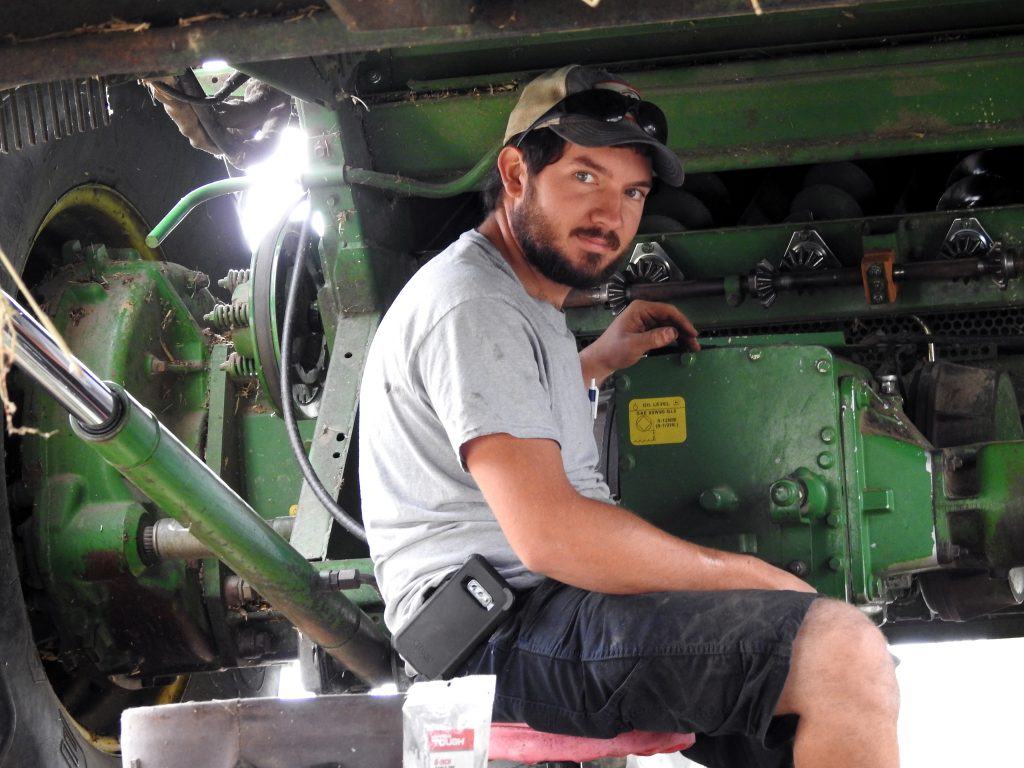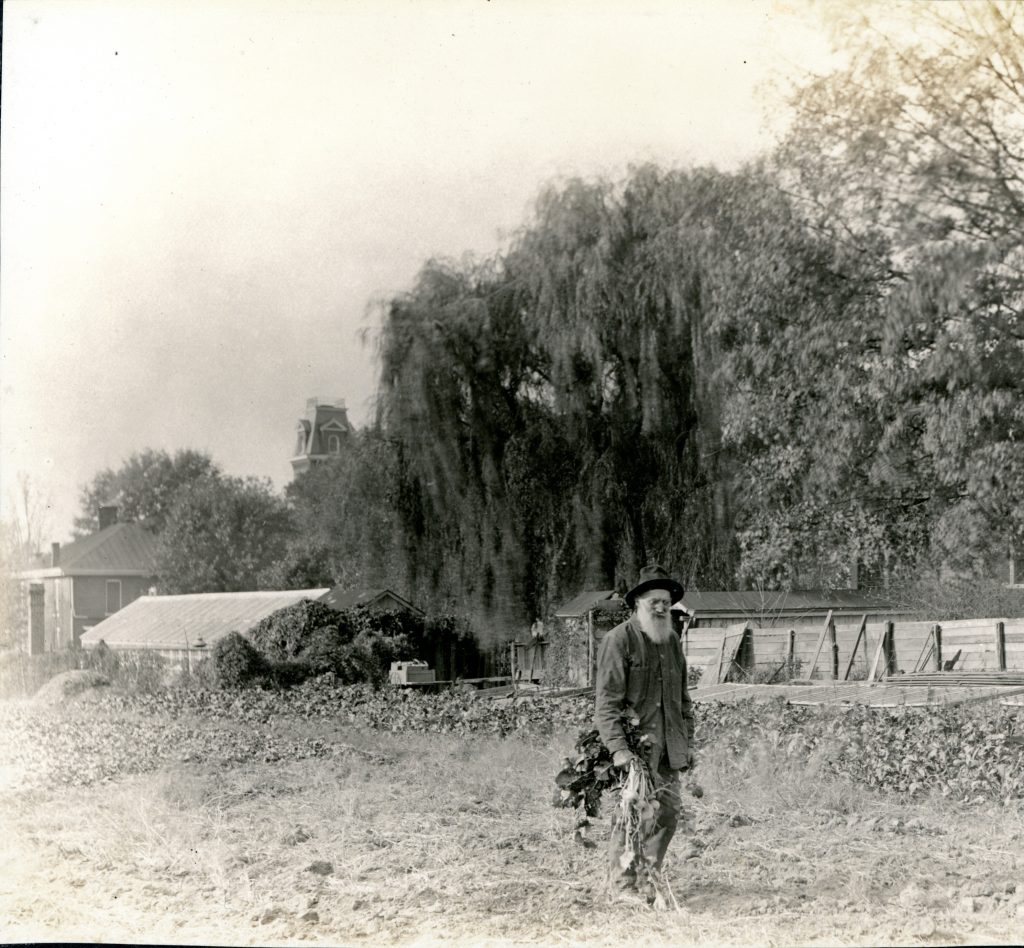Running a farm, Caring for Earth
Posted on June 12, 2020, by Christina Manweller
The studies that have been done about regenerative agriculture, that’s really what Cody is already doing in many aspects.
Susan Classen CoL, Eco-Systems Manager
Photo by Christina Manweller

Farmers, working hard to produce crops and put food on our tables, bear much of the burden of a changing climate.
“I’m checking the weather multiple times a day,” says Cody Rakes, Loretto Farm Manager. “Accurate weather forecasts are extremely important. It seems to be increasingly difficult with the more extreme climatic conditions.”
Heavy rains in 2018 were followed by a drought in 2019. Last summer, it barely rained; September was the driest month in Kentucky meteorological history. Shades of brown prevailed in October.
These vacillations create real and increasing challenges. The extreme rains in 2018 saturated the limestone bedrock, causing the surface to give way in places. “I have a mental map of where sinkholes are at so I avoid them,” Cody says. Last April, he was crossing one of the fields on the farm’s big tractor when a front tire fell into a 4-foot-deep hole, breaking the axle. “When I planted the wheat in the fall, that hole wasn’t there.
“That particular tractor is probably used 500-to-600 engine hours per year and about 400 of those hours are in April, May and June. This was the third day I’d used it since the previous fall. I couldn’t find one that size to rent and we didn’t get the tractor back until the end of June.” He shakes his head. “That was a challenging experience!”
Cody offers a tour of the fields, pointing out those planted in corn, sorghum-sudangrass (a drought-tolerant annual loved by cattle), native grasses and wildflowers, plus the woodlands.
The cattle roam a large field near the barn. Over the next days, I enjoy visiting the newborns at the barn, watching them grow from inert lumps at their mothers’ feet to stum-bling calves. Soon they will be cavorting in the field.
A Kentuckian, a family man
Cody grew up on a farm across Marion County from Loretto. He graduated debt-free from the University of Kentucky. “When I went to college, I probably had 10 cows. That served as a college fund.”
When I visited, Cody’s wife was pregnant with their second child. He and his wife now have two beautiful children, be-loved by the community. The family lives up the road a piece.
Educating farmers
“I have a research background. I enjoy trying different things, seeing how they work, collecting data.” Cody’s degree in agricultural education, his research and extensive knowledge, all benefit local farmers through educational opportunities hosted at the Motherhouse Farm.
The programs routinely draw 75-80 farmers, and have included sessions on foraging, cover crops, water systems, fencing and weeds. Cody says, “Pretty much everybody who comes to field day has said they were going to adopt some of what they’ve learned.”

The Motherhouse’s vast 789 acres
Cody informs me that an acre is roughly the size of a foot-ball field: 43,560 square feet. Cody is, in fact, a fount of knowledge. It’s clear why his field days are well-attended. “On the farm we’ve got about 300 acres in woodlands; about
200 in pasture and hay; 200 acres in row crops (corn, soy-beans) — and we also do cover-cropping on those acres; 25 or 30 acres of water—lakes, ponds, streams; and 78 acres in the USDA’s Conservation Reserve Program [currently planted in native grasses, native wildflowers and mixed hardwood trees]. The balance is the campus area.”
Farming best practices employed
- Rotational grazing: by moving cattle out of a field after a week, plants have a chance to regrow.
- No tillage: disturbing the soil as little as possible.
- Focusing on building the soil.
- Rotating crops: helps with soil health, minimizes pests and weeds.
- Cover crops: planted immediately after a field is harvested, they hold nutrients in the plant-available layer so they’re not washed away into groundwater. A cover crop is dense and helps control weeds. Once mowed down, it acts as a mulch, holding in water and again inhibiting weed growth. Cover crops can be harvested for hay.
- Minimizing the use of herbicides and synthetic fertilizers.
- Growing non-GMO corn and soybeans.
A strong, growing movement of people across the nation is calling for new policies and practices related to food. Our experience of working this land and our efforts to transition to sustainable farming practices is educating us to the issues farmers face. We can share that experience with others and support policies that are needed for small farmers to succeed.
Loretto’s Farm and Land Mission Statement
Photo by Christina Manweller

